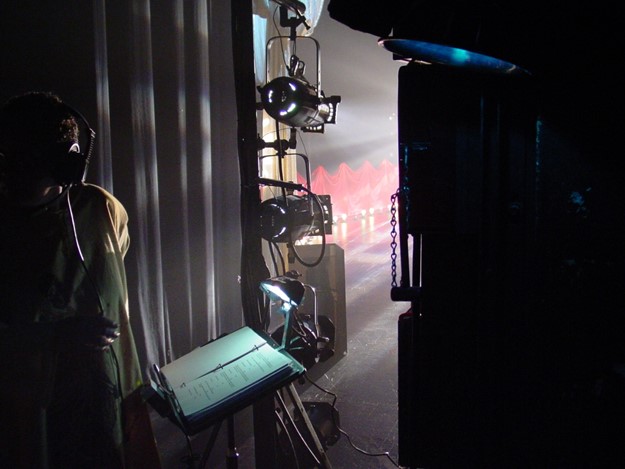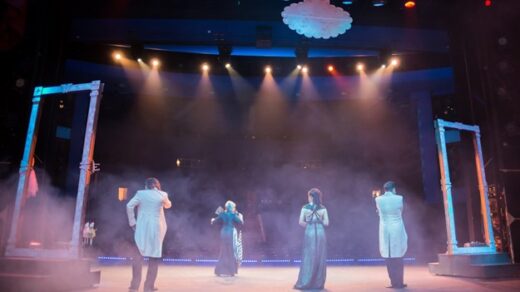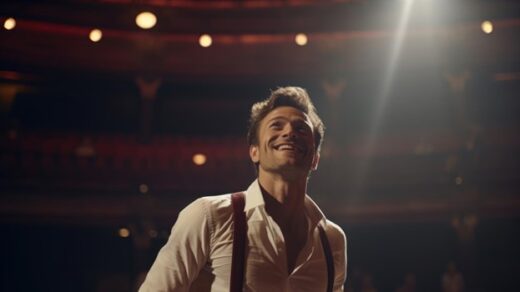
The lights dim, the curtain rises, and the audience is instantly transported into a world of drama, emotion, and spectacle. This is Broadway, a realm where stories come to life through awe-inspiring performances. Talents like actor James Snyder, known for his remarkable performances in ‘In Transit’ and ‘Cry-Baby,’ shine on stage. However, there exists a realm of equally vital, yet often unseen, heroes who work tirelessly behind the scenes. The true magic of Broadway extends far beyond its glittering surface. Behind every successful Broadway production is an army of unsung heroes – directors, stagehands, costume designers, and various key personnel – whose tireless efforts often go unnoticed but are integral to the theater’s enchantment.
The Directors: Masterminds of the Stage
In the world of Broadway, directors are the visionaries. They are the creative forces that shape the essence of a production, translating words from a script into a living, breathing performance. A director’s role is all-encompassing – they are involved in every aspect of the show, from casting and rehearsals to set design and the final bow.
Directors like Julie Taymor, renowned for her visionary approach in “The Lion King,” exemplify the transformative power of a director’s creativity. They collaborate closely with every department, ensuring that the lighting, sound, and performances come together in a harmonious narrative. Directors don’t just guide the actors; they inspire them, challenging them to delve deep into their characters and deliver performances that directly resonate with the audience.
Stagehands: The Invisible Force
Beneath the dazzling exterior of Broadway productions are the stagehands – the unsung warriors who work in the shadows. These individuals are the operational backbone of every show. Their work begins long before the audience arrives and continues after the final applause.
Stagehands are responsible for the physical aspects of a production. They construct and maneuver sets, manage props, control lighting rigs, and ensure that every scene change is executed flawlessly. In productions like “Hamilton,” where rapid scene changes are integral to the storytelling, the skill and precision of stagehands are absolutely crucial. Their ability to synchronize their movements with the actors and the narrative is what keeps the show running seamlessly.
Costume Designers: Weavers of the Visual Tale
Costume designers in Broadway are the architects of a character’s external persona. Their work goes beyond mere clothing design; it involves deep research and a complete understanding of the narrative, characters, and historical context. Costumes function as a visual language, conveying a character’s personality, status, and evolution throughout the play.
The role of a costume designer is both artistic and technical. Designers like Ann Roth, who brought the characters of “The Book of Mormon” to life, not only design but also oversee the creation and maintenance of each costume piece. Their challenge lies in creating garments that are not only visually striking, but also functional and durable, able to withstand the rigors of daily performances.
Lighting and Sound Technicians: Sculptors of Atmosphere
Lighting and sound technicians are the artists who sculpt the atmosphere of a Broadway show. Lighting designers use their mastery of light and shadow to create mood, focus, and visual interest. They play with colors and intensities, directing the audience’s attention and enhancing the emotional impact of a scene.
Sound technicians, on the other hand, ensure that every note of music, every word of dialogue, and every sound effect is heard with clarity. Their work is crucial in shows like “Dear Evan Hansen,” where the emotional depth of the story is conveyed through a delicate balance of dialogue, song, and silence. These technicians work meticulously to create a soundscape that perfectly complements the visual elements, ensuring a totally immersive experience for the audience.
Choreographers and Musical Directors: The Rhythm Creators
Choreographers and musical directors are the pulse of a Broadway show. Choreographers craft the physical storytelling through dance and movement. They work closely with the director and actors, creating routines that express the narrative and characters’ emotions.
Musical directors, meanwhile, are responsible for the auditory soul of the show. They oversee the musical aspects by working with the orchestra and coaching actors in their musical performances. In musicals like “West Side Story,” the integration of music and choreography is pivotal, requiring the utmost skill and coordination from each of these professionals.
The Symphony of Collaboration
Broadway productions are a symphony of collaboration, a dance of many hands and minds working in unison to create something greater than the sum of its parts. The directors, stagehands, costume designers, lighting and sound technicians, choreographers, and musical directors each play a crucial role in this intricate ballet. Their dedication, skill, and passion breathe life into the scripts, transforming them into mesmerizing spectacles that captivate audiences night after night.
In the end, Broadway is not just about the stars on stage; it’s about the collective effort of all these talented individuals. They are the true architects of the magic of theater, the unsung heroes who, from behind the scenes, make Broadway shine.



